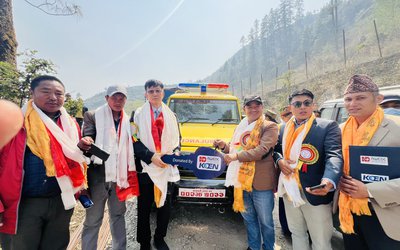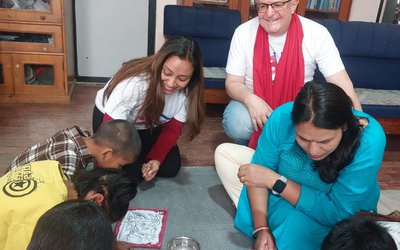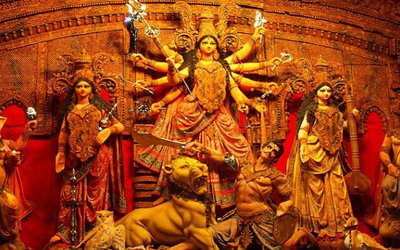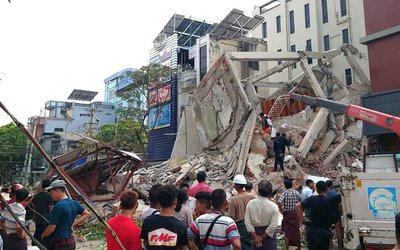Turkey, with historic politico-cultural connections to Greek, Persian, Roman, Byzantine and Ottoman empires, is a fascinating and strategically located nation on the Anatolian peninsula in West Asia with small part on the Balkan in Southeast Europe. Istanbul (Byzantium in antiquity), at the Bosphorous linking the Black Sea and the Mediterranean on the pathway to the Silk Road in ancient times, remains an economic hub, tourist attraction and travel node connecting Asia with Europe. The resort town of Kusadasi, at the Aegean Seashore, is lovely and not too far from both Izmir (Smyrna in antiquity) and Ephesus with historic landmarks spanning over 3 millennium. This travelogue, “Passage through Turkey”, thus, entails glimpses of life, landmarks and loitering around Istanbul, Ephesus, Kusadasi, and Izmir.
Istanbul’s wonderful old city, centered on the Sultanahmet neighborhood, is the treasure trove of the city’s finest architectural legacies and historic landmarks spanning over 3000 years. Sultan Ahmed Mosque, popularly known as the Blue Mosque, with its six towering minarets, 260 windows and 20,000 Iznik blue tiles over its interior is among the finest landmarks representing the Ottoman architecture. It derives the name Blue Mosque because of the blue interior tiles and appears strikingly blue when illuminated at night. Originally built as a Church by the Eastern Roman in 537 and renovated into a Mosque by the Ottoman Sultan in 1453, the Hagia Sophia or Aya Sofya museum close by is among the most iconic heritage of Ottoman- and Byzantine-era. Not too far is the Topkapi Palace museum, the oldest abode of Ottoman Sultans, with their treasury, exotic buildings and harem exhibiting ornaments, weapons, library, photographs and many historical items offering light on the life and long rule of the Ottoman Sultans.
Connecting most of the Sultanahmet landmarks is the Istanbul Hippodrome, a huge rectangular open space and the hub of the city’s sporting and political life in ancient times, was dotted with Roman and Greek pillars, landmarks and granite Egyptian obelisk taking you back to the ancient days of wars, cruelties, empire building and grandeur. Istanbul’s Grand Bazaar, one of the largest and oldest covered markets in the world in operation since the 14th century spanning 60 streets and 4000 shops, offers you both thrilling and confusing glimpses of the humdrum of hard bargained buying and selling of thousands of items; including carpets, jewelry, leather, pottery, spices, perfumes.
A 90 minute ferry ride to the Princes Islands, the largest islet on the Sea of Marmara 20 kilometer off the coast of Istanbul, was exhilarating. Being vehicle free, a horse-drawn carriage took us around the Island for lovely view of Ottoman mansions, greenery and the Sea of Marmara with the Asian side of Istanbul at the end of the vista. Tender touch of gentle and salty Sea breeze on your cheeks on the way to and back from the island was a bonus to cherish. Watching hordes of seagulls swirling around gobbling fishes stirred by waves created by the fast moving ferry from the open top deck on that sunny day while returning back to Istanbul from the pristine Island was soothing.
While my desire to cruise the Marmara Sea on a public ferry along with locals munching on light Turkish snack was the primary motivation for the Princess Island sojourn, a curiosity to glimpse at the Russian revolutionary Leon Trotsky’s transitional abode on the island after banished to Turkey by his arch rival Stalin in 1929 was a factor too. Though not known to many locals now, a Google assisted 45 minutes walk from the ferry station finally led us to a crumbling mansion in a weed infested compound at the end of a sloping back road at seafront, where Trotsky’s had lived and written his thoughts between 1929-33. The trip to this dilapidated and forgotten mansion was somehow an anticlimax of the beautiful Island hopping. But it was fascinating to ponder how the complex play of karma did topsy-turvy the life and politics of once a powerful communist who lost a muddy factional power struggle to his ruthless rival and was assassinated in Mexico in 1940, allegedly by Stalin’s agent.
Back to the very heart of Istanbul, Taksim Square, the Republic Monument, opened in 1928 after Ataturk-led revolution, was fine to have a glimpse. But the lovely Turkish lunch consisting of grilled fish, lamb shwarma, chicken kebab, vegetables topped off with pistachio baklava and Turkish Ice cream nearby made it a worthwhile visit. Also, the pleasure was multiplied as we were able to undertake an hour-long walk through crowded Istikal Street and many winding old streets to the world famous Turkish writer and 2006 Nobel Laureate, Orhan Pamuk’s red house. The house at the quiet Çukurcum road was the "Museum of Innocence" exhibiting items described in his novel by the same name but Orhan didn’t live there.
On the way back, we hopped on the waiting Bosphorus- Golden Horn Cruise with Istanbul skyline with historic mosques, palaces, bazaars and amazing waterfront fleeting by. Interestingly, the Golden Horn, an inlet of the Bosphorus, derives the name Golden from the golden color its water gets as the sun sets. A leisurely evening walk along the waterfront with the well lit city and many ships passing by added flavor to the post cruise experience. Additionally, a taste of traditional Turkish coffee prepared by local vendors over a stove with charcoal fire in a traditional kettle and served in a tulip shaped glass at the seafront by the Galata Bridge turned out to be a simple but a real pleasure to cherish.
Culturally, Istanbul is famous for traditional music and dances, including belly dance. The 800 years old Whirling Dervish dance consisting of flurry of fast movements with Persian-Turkish music, prayers and poems accompanied by flute, kettledrum and cymbal is probably among the cultural events to explore.
Istanbul trip is incomplete without enjoying Turkish cuisine. Baklava with fine layers of thin dough and varieties of nuts soaked in syrup was a pleasure to relish almost half a dozen times. Simit, popular Turkish circular sesame bred, was tasty to munch on. The Lamb and Chicken Testi Kebab and Balloon bread dinner at Sultanahmet remains memorable for its taste. And also the way it was prepared in clay pots (Testi in Turkish stands for clay pot) engulfed with flames and served by breaking the top of the pot while the waiters and customers clapped. Soft & puffed up breads, called balloon bread or Pauf Ekmek, accompanying the Kebabs was lovely. Nevertheless, the cooking and serving rituals added uniqueness to the dinner experience.
Beyond Istanbul, the small hilly Aegean Sea resort town of Kusadasi 560 kilometers from Istanbul in Western Turkey was relaxing and exotic. Day trips to the historic Ephesus ruins, Selcuk and Izmir towns from Kusadasi were educational and comfortable. A day at the Ephesus ruins with over 3000 year’s history under Greek, Roman, Persian, Egyptian, Selcuk and Ottoman was fascinating to grasp a glimpse of civilization changes under different empires and rulers. Among many landmarks at Ephesus the 1900 years old 3 storey Celsus library, grand open theatre that accommodated 25000 spectators in the ancient time, public toilets, huge open space or agora with markets, large monuments of emperors, a statue of the flying goddess of success- Nike, were worth visiting. Izmir, about 35 kms from Kusadasi, with number of archaeological sites; including the Roman Agora of Smyrna (now an open-air museum), the hilltop Velvet Castle built during Alexander the Great’s reign in 340 BC; were interesting.
It was both fun and educational passage through Turkey. With the conclusion of Istanbul, Izmir, Ephesus, Selcuk and Kusadasi visits, the Turkey trip ended and our journey towards Uzbekistan began.

Som P. Pudasaini
Pudasaini is former UNFPA Representative to Sri Lanka and a Travel lover. Feedback to som.pudasaini@gmail.com
- Uzbekistan: Sojourn To The Old Silk Road
- Jan 26, 2020
- Gods, Gallis And Gyaneshwar
- Mar 29, 2019
- Bagmati River Civilization And Spiritual Salvation
- Mar 04, 2019
- Hop-On-Hop-Off Riverside Bangkok Som P Pudasaini
- Feb 10, 2019
- Hanoi: Rendezvous With Uncle Ho And Descending Dragon
- Jan 26, 2019















